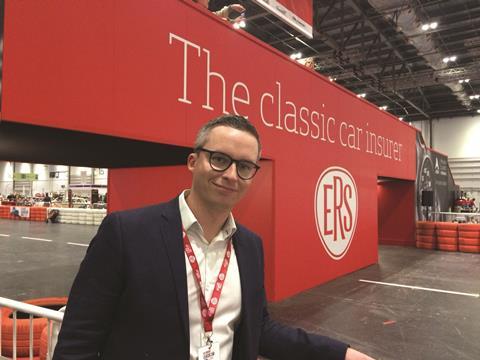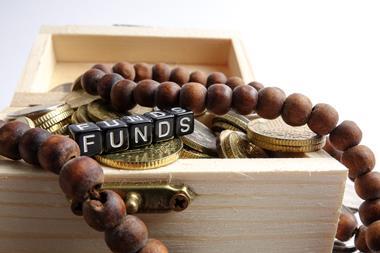Insurer ERS is reliant on the expertise of brokers for its classic car cover, says head of bespoke underwriting, Tom Donachie
In ERS’s London office, they have a running joke that the classic cars they insure get cleaned and washed more than they get driven.
Then again, as head of bespoke underwriting Tom Donachie (pictured) says, from an insurance perspective this is a good thing.

Donachie himself is a car enthusiast, as are the rest of the underwriting team.
His dream car would be a Ford GT40 Mark 2. However, he laughs, he would settle for a Peugeot 205 GTi or a Renault 5 GT Turbo, both of which are more likely to be within his price range.
Underwriting peace of mind
The insurer does no direct business, so it is reliant on its well-versed broker partners to talk through the condition and specifications of a vehicle with their clients before the underwriters can assess the risk.
Motor insurance is a must-have for any driver in the UK, but when it comes to classic cars, customers have additional expectations that an underwriter must live up to.
“The classic cars are their pride and joy,” Donachie explains. “Most of what people are looking for, I would say, is peace of mind.”
The value of the cars that ERS insures can range from as low as £1,500 into the millions.
Underwriters need to have knowledge of the going rate for a wide range of cars.
“If you’ve got someone who is fresh to motor and fresh to classic cars, it can take a while to get your head around the sheer volume of different makes and models. Some of which you would never have heard of unless you were really into your subject matter,” Donachie says.
Like the stock market
One big challenge that underwriters face is the fluctuation in the value of the vehicles.
Donachie compares it to the stock market, or the property market.
“Everyone has a theory or an opinion on what is going to happen next,” he says. “But until it happens, no one is really going to know whether the values of the classic cars are going to go up or down.”
Agreed values, he adds, are critical to make the customer happy. In a changeable market, they want to know that in the event of a loss they will get their cash back. ERS offers this as standard.
Although the cars may be old – sometimes decades older than their owners – this does not mean that they are likely to have damage or marks.
On the contrary, they are likely to be very well looked after.
Some have been passed down through one family for generations and are the pride and joy of their owners.
All on file
In the event of a claim, it is normally simple to assess whether any damage is fresh, because people tend to have a stockpile of images of their cars online or on their mobile phone.
“Normally they have it all on file. You’d be surprised, if you went through our records, the amount of photos of cars that we have,” Donachie continues.
When a claim occurs, an engineer is sent to inspect the damaged vehicle to assess whether it is repairable and perform a valuation of repair costs.
If there is a gap between the value provided at the underwriting stage and a revaluation, ERS would approach the broker for an explanation.
Even in a total loss situation, unlike with most car owners, customers may want to keep the salvage, which Donachie explains is “precious to them”. In these cases, a totalled classic car can become part of a project for them.
This needs to be a consideration for the underwriter.
A risky misconception
Some people might consider classic and motor fans as riskier drivers who want to enjoy the roads. However, for Donachie, this is a misconception.
“Most people are not in a rush when they’re driving classic cars,” he says.
“They’re not trying to get somewhere like you and I. If you’re going to a meeting in Sheffield for 9.30 am, you might bomb down the motorway.
“Whereas if you take out a classic car on a Sunday afternoon to go to a local event, you’re probably just going to do it at your own pace.
“And you’re generally going to be more relaxed in the area and the surroundings. I would definitely say they are less risky.”
Driving experience
In addition, most classic car drivers are over 30, though ERS does insure younger drivers.
If a 21-year old comes to a broker asking to insure a classic car for them, the underwriter needs to consider their driving history.
The length of time they have been driving has to be considered, as well as the type of car they have previously driven.
For any motorist, going from a typical car to a classic car is a big jump in driving experience.
“You could go from a Fiesta to a Ferrari,” Donachie explains. “From an insurance perspective, that would be a bit of a challenge. You want to make sure that they can control the vehicle and they are not going to lose control and smash it up.”
It is a lot of responsibility to underwrite the risks for such a cherished possession, especially one that could be worth millions.
Fortunately for ERS’ customers, classic and unusual cars are Donachie and his team’s passion as well as their living.






































No comments yet